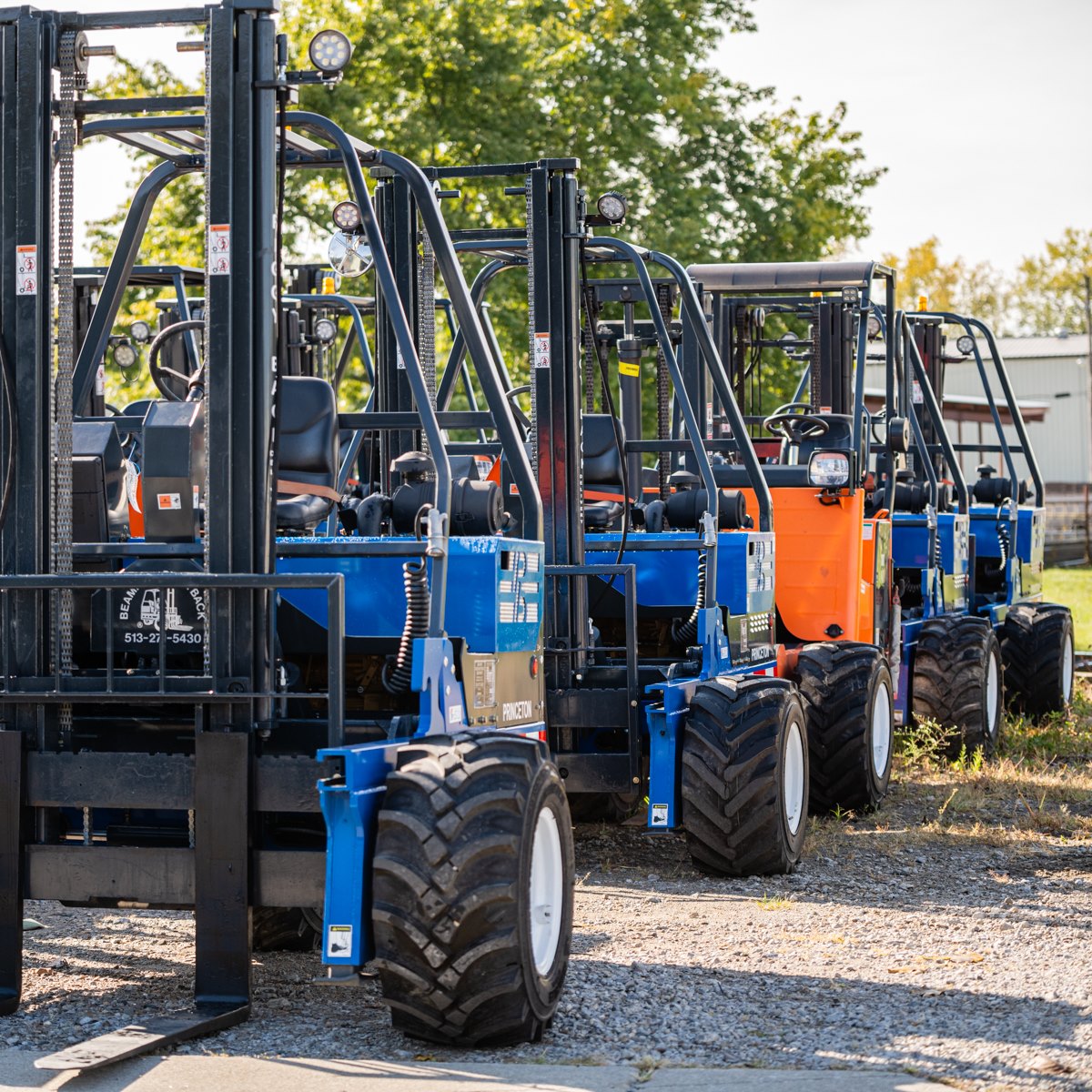Modifications for Your Forklift: Rules and Regulations
Modifications for Your Forklift Rules and Regulations
.png)
Forklifts are a powerful tool for your workplace. When it comes to moving, hauling, and transporting heavy loads and pallets, there is nothing better than a forklift. Many businesses want to modify their forklifts so that they can more efficiently perform the types of jobs that regularly take place on-site.
Examples of modifications that businesses consider include alterations to help them lift more weight, gain more traction, or lift a specific type of load. Modifications like these can make your daily operations more efficient, but not every modification is safe and legal.
OSHA has outlined several rules for making modifications to forklifts in the workplace that are designed to protect the safety of workers. We will discuss these later in the post.
This post is all about forklift modifications, including what you can and cannot modify and how to properly make modifications. Keep reading to learn more!

Safety First: Compliance with Regulations
Forklifts are essential equipment in many workplaces, but they can easily harm workers if improperly modified. Improper modifications can affect the forklift's balance, stability, and overall safe operation. One crucial factor to consider is the counterbalance of the forklift. Improperly weighting the forklift can not only cause damage to the equipment but also pose significant safety risks to the employees operating or working around it.
To ensure compliance with regulatory standards, such as Section 7, Regulation 851 under OSHA, it is crucial to obtain written approval from the forklift manufacturer for any modifications.
Additionally, after receiving approval, it is essential to update plates, labels, tags, and manuals, and retrain drivers as per the approved modifications. This helps to ensure that all employees are aware of the changes and are trained to operate the modified forklift safely.
Are modified forklifts not right for you? A reconditioned forklift might be a better fit for your business, click here to learn more!
Qualified Supervision
All modifications to any equipment or machinery must be conducted or overseen by an experienced, accredited mechanic or engineer. This ensures that the modifications are carried out safely and per industry standards.
If manufacturer approval for modifications is not attainable, written approval from a Qualified Registered Professional Engineer is acceptable to OSHA. This ensures that the modifications are reviewed and approved by a professional with the necessary expertise and experience to assess the safety and integrity of the modifications.
Qualified supervision is crucial to ensure that all modifications are carried out in a manner that prioritizes the safety of equipment operators and other individuals in the vicinity. This includes ensuring that proper safety protocols and standards are followed throughout the modification process.
.png)
Types of Forklift Modifications You Can Make
There are several types of forklift modifications that you can make to enhance performance, improve operator comfort, and adapt to special environmental conditions. Some of these modifications include:
- Addition of a side-shifter
- Use of a specialized clamp to handle new inventory
- Addition of a 3-stage mast
- Drilling into the overhead guard or hood
- Installation of a new tire-type
- Installation of longer or different types of forks
- Swapping counterweights
By making these modifications, forklifts can be customized to meet specific needs and challenges, ultimately leading to increased productivity and improved safety in the workplace.
Caution with Attachments
When operating a forklift, it is crucial to be cautious when using attachments. While attachments may seem like a convenient way to increase the functionality of the forklift, they can also have a significant impact on the forklift's weight distribution. This can lead to an imbalance in the forklift, making it more difficult to control and increasing the risk of accidents.
Attachments such as side shifts, clamps, and extensions can add extra weight to the forklift, affecting its stability. Additionally, the placement of the attachments can shift the center of gravity, making the forklift more prone to tipping over.
To ensure safe operation, it is important to steer clear of adding attachments that can alter the forklift's weight distribution. If attachments are necessary for a specific task, the forklift operator should consult the manufacturer's guidelines to determine the maximum allowable weight and proper placement of the attachments.
Furthermore, operators should be trained in the proper use of attachments to minimize the risk of accidents. Regular inspections of the forklift and its attachments should also be conducted to ensure everything is in proper working order.
By exercising caution and following the manufacturer's guidelines, forklift operators can minimize the risks associated with using attachments and ensure a safe and efficient work environment.
How do you maintain your forklift fleet? Learn more in this blog!
.png)
Lifting Mechanism Interference
When working with a lifting mechanism, it is important to avoid any modifications that could interfere with its functionality. This includes not adding extra lifting points or making any alterations that could affect the stability or safety of the lifting process.
Any modifications to the lifting mechanism should be carefully considered and approved by a qualified engineer or manufacturer to ensure they do not interfere with the equipment's intended operation. Adding extra lifting points, for example, could shift the center of gravity and cause instability during the lifting process, leading to potential accidents or damage.
To prevent interference with the lifting mechanism, it is essential to follow all manufacturer guidelines and safety regulations. This includes conducting regular inspections and maintenance to ensure that the equipment is in proper working condition.
Furthermore, operators should be properly trained in the safe operation of the lifting mechanism and understand the potential consequences of any modifications that could interfere with its functionality.
Tines Modifications Warning
When modifying forks, it is essential to ensure that they remain parallel and undergo regular inspections for wear and bending. Any deviations from the proper alignment and any signs of damage should be addressed immediately to prevent accidents. Using high-quality materials for any modifications is also crucial to avoid potential hazards.
By adhering to these guidelines and understanding the risks associated with modifying forks on a forklift, it is possible to maintain a safe and productive work environment. Prioritizing safety and proper maintenance of equipment is key to preventing accidents and ensuring the well-being of everyone in the workplace.
Forklift Modifications from Trusted Technicians at Beamers Piggyback
Modifying your forklift so it is a better fit for your job and your work environment is a great way to make your workplace more efficient and your workers happier. However, there are laws, regulations, and safety concerns you need to be aware of when considering a forklift modification.
The counterbalance system inside of a forklift is carefully measured, and if improperly altered, it can cause an accident that can severely harm your workers. For that reason, all forklift modifications must be made by a qualified technician, like those found at Beamers Piggyback.
Beamers Piggyback's technicians know what it takes to properly modify your forklift and our whole team is here to make sure you get exactly what you need to make your forklift perfect for your workplace.
Click here to reach out to our team about your forklift modification now!
Satisfied with the Beamers Piggyback difference? Leave us a quick review on Google here!
Don't miss out on the best tips! Follow Beamers Piggyback on Facebook and Instagram for more free semi-truck and forklift maintenance tips!
